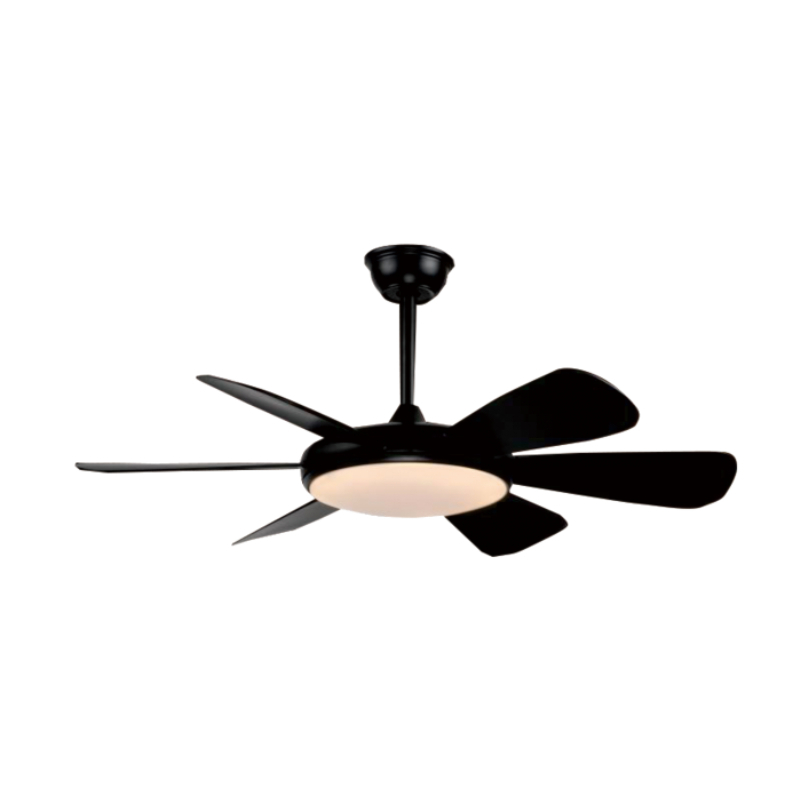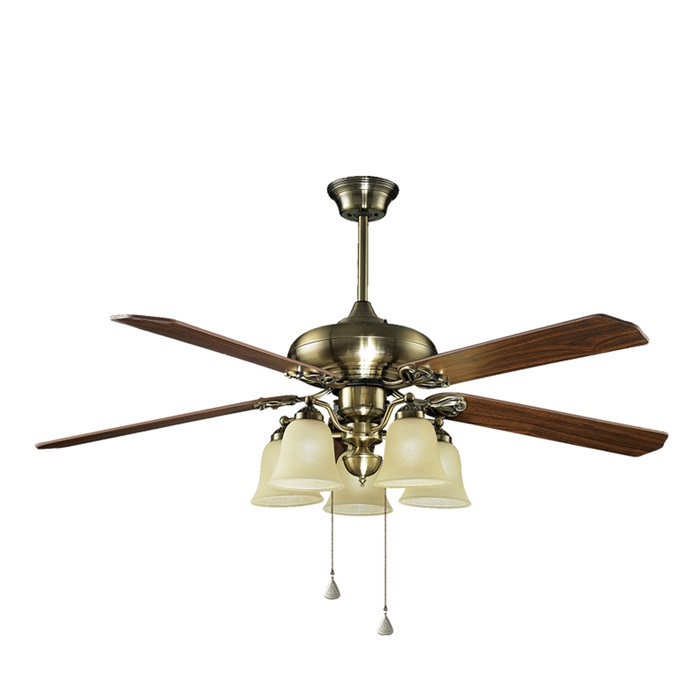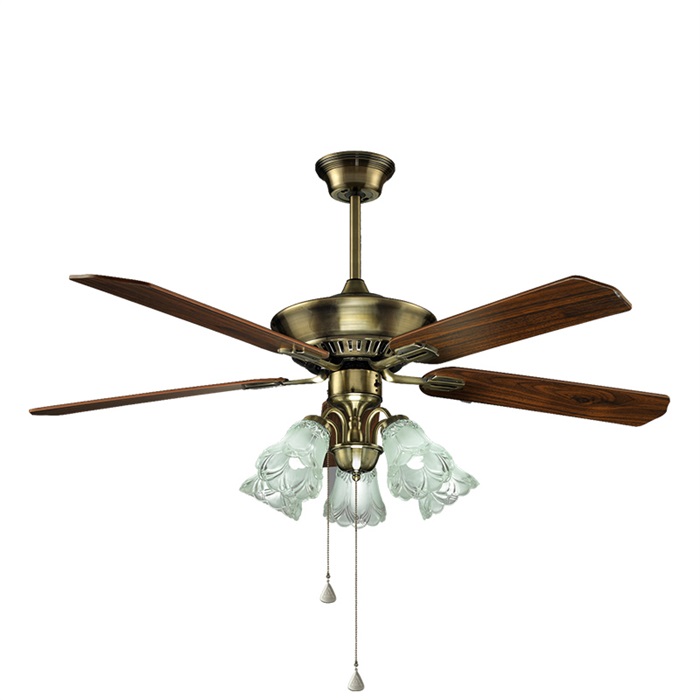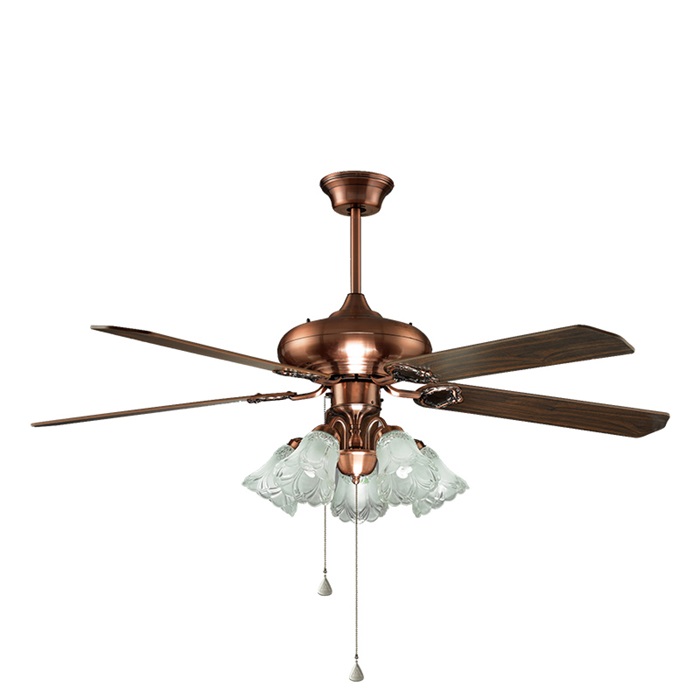How to Choose a Ceiling Fan(3 Blade or 5 Blade)
Selecting the right ceiling fan isn’t just about choosing the right color and style. There are some key factors that you must consider your decision in order to get the maximum efficiency and enjoyment from your fan.
How Many Blades Should A Ceiling Fan Have
Most ceiling fans deigned for the home come with 4 to 5 blades for the ideal balance between the amount of air circulated and the amount of ambient noise. Whether you are looking for a new ceiling fan or wanting to replace an old fan, Martec has the right fan for you.
Are 3 or 5 blade fans better?
When it comes to design and aesthetic look, the 3 bladed ceiling fan is more pleasing than the 5 bladed. Generally, the more blades the ceiling fan has, the quieter it is and circulates less air. Ceiling fan with more blades can increase the drag on the motor and affects its movement.
Do the number of blades on a ceiling fan matter?
As a rule, as the number of blades goes up, the fan tends to be quieter and circulates less air. Additional blades increase the drag on a ceiling fan’s motor and slow it down. Many ceiling fans designed for the home come standard with four or five blades.
How many blades on a ceiling fan make the best airflow?
Three fan blades are ideal for the optimal efficiency of indoor and outdoor ceiling fans. However, fans with four or five blades will provide adequate air circulation yet have other considerations regarding the installation and overall performance, such as weight, noise, and power draw.
Are 3 blade ceiling fans Effective?
Three-blade fans are generally considered ideal because they have enough blades to ensure sufficient airflow but not too many blades to increase the drag coefficient enormously. For this reason, the three-blade ceiling fan is more energy-efficient than the five-blade ceiling fan.
How long are the blades on a 52 inch ceiling fan?
Ceiling Fan Size Guide Blade Span Good for Room Size 29″ to 36″ Bathrooms, Breakfast Nooks, Utility Rooms Up to 75 sq. ft 42″ to 48″ Bedrooms, Kitchens, Dining Rooms Up to 175 sq. ft 52″ to 56″ Large Bedrooms, Family Rooms, Media Rooms Up to 350 sq. ft 60″ or larger Great Rooms, Other Large Spaces More than 350 sq. ft.
Why does a ceiling fan have only 3 blades?
However, for domestic ceiling fans, three blades turn out to be optimal for air delivery and cooling comfort. With higher number of blades, the fan tends to be slower in speed and thus quieter but circulates less air. Additional blades increase the drag on a ceiling fan’s motor and slow it down.
Is a 3 blade or 4 blade fan better?
4-blade ceiling fans are less noisy and are useful in rooms with an air conditioner, to move the cool air around. They are often more stylish looking. However, 4 blade fans may move air slower than a 3 blade fan and can be more expensive than 3 blade ceiling fans.
What fan blade is quietest?
The SXT blade profile is suitable for both wet and dry cooling applications and offers high fan efficiency. The innovative blade design results in an extremely quiet fan (up to 15dB(a) quieter than a standard fan) while keeping the fan very light.
What size room do I need for a 44 inch ceiling fan?
Rooms 144 to 225 square feet=44 inches. Rooms 225 to 400 square feet=50 to 54 inches.
Which ceiling fan moves the most air?
A flush-mount ceiling fan with a high CFM will move the most air for you. You’ll want to look for a high-flow model that has a 7000 CFM rating at minimum if you want a lot of air movement in your room.
Can a fan be too big for a room?
Besides of freshening a room, fans complete a room design and composition. A ceiling fan that’s too big will overpower the room’s design and visually pull the ceiling downwards; a fan that’s too small won’t properly circulate the air.
What makes a fan quiet?
Oil the Fan’s Motor So get your oil canister or spray on some WD40 and give them a top-up… Lubricating them in this way will often make things run quieter as there is less friction between moving parts which can reduce noise levels.
How many blades is best for stand fan?
So, it is ideal to find three blade ceiling fans for optimum airflow that works with lesser friction. In this case, the motor load is also manageable, and you are protected from unnecessary noises. While having four blades might improve the aeration, it can increase the amount of load on the motor.
What should I look for in a ceiling fan?
Things To Know Before Buying a Ceiling Fan (1) Energy Savings. (2) Larger Rooms Need Bigger Fans. (3) Bathroom and Outdoor Ceiling Fans. (4) Fan Blade Pitch and Size. (5)The Motor. (6)Choose a Lighting Style and Kit to Match Your Decor. (7) Consider the Warranty. (8)Installation.
What is the most efficient fan blade design?
With a curved blade design, the backward curved fan is one of the most efficient centrifugal fan options available. It’s able to move high volumes of air at high static pressures and can be a great option for many industrial applications.
Is a 52 inch fan too big for a 12×12 room?
Ceiling Fans Between 52” and 56” These the most commont size of ceiling fans, meaning they’re better for spaces between 144 and 300 square feet. If you want any averate sized living space to get some good ventilation, this fan size works well.
How do I know what size fan blade I need?
Standing on a step ladder as needed, hold one end of a tape measure to the tip of a fan blade on a fully assembled fan. If the unit has an even number of ceiling fan blades, extend the tape measure to the end of the opposite blade and record the distance from tip to tip. This is the diameter.
WHAT IS THE DIFFERENCES BETWEEN 3 BLADES AND 5 BLADES FAN?
3 Blades ceiling fan has higher RPM and lower power consumption.3 Blades ceiling fan is lighter than 5 blades ceiling fan and the air resistance for 3 blades fan is lower than 5 blades. Hence, the Round per Minutes (RPM) for 3 blades fan is higher. For example, Crestar Value Air 3 Blades (46”) can reach up to 282RPM while Crestar Value Air 5 Blades (48”) can only reach up to 252RPM at their highest speeds. ?For power consumption wise, 3 blades Crestar Value Air is only 28W compared to 37W for 5 blades Crestar Value Air on their highest speeds. There’s a 25% difference on their power consumption.
3 Blades fan seems like did a better job than 5 Blades fan. BUT WHY 5 BLADES FAN STILL EXISTS IN THE MARKET?
5 Blades fan is good at its wind delivery. The wind delivery for 5 blades fan is better than 3 blades fan. In other words, the wind delivery for 5 blades fan is more balance than 3 blades fan. Another advantages of 5 blades fan is the aesthetic looks. 5 blades fan fits better in larger space like Living Room or Master Bedroom. That’s the reason why 5 blades fan are commonly made in a larger size and larger wind area coverage. For instance, Crestar Value Air 5 Blades Fan comes with 48” and 55” while 3 Blades fan only comes with 40” and 46”.
HOW ABOUT 2 BLADES & 4 BLADES CEILING FAN?
2 Blades ceiling fan is popular for its artistic design but seldom used in common household. For ceiling fan with even number blades, if balancing is not done by professional ceiling fan installer, it might cause the ceiling fan wobbling in high speeds.
To conclude, 3 blades ceiling fan and 5 blades ceiling fan are the most common ceiling fan sold in the market. Make your decision to choose a right ceiling fan by consider the room size, interior design, fan speed, wind delivery and wind coverage area.

3 Blade vs 5 Blade Ceiling Fan
Ceiling fans are some of the most efficient and affordable cooling appliances to consider using in your home. Not only are they portable, appealing, and comforting, they are also affordable and easy to use.
Ceiling fans have been around for years and are normally used in residential and commercial spaces to provide the best cooling experience, especially during the hot summer season.
However, ceiling fans are not only useful in summer but also during winter. That’s right; you can use a ceiling fan to circulate warm air in your house when the weather is too cold.
But, just like many other appliances sold on the market, ceiling fans come in various designs and sizes. They tend to have a different number of blades ranging from 3 to 5 and even more.
Choosing a ceiling, depending on the number of blades it has, can be quite tricky. This is something that most people are unable to do because they fail to understand why this is so and the most efficient option to consider.
Unfortunately, most people assume that the more blades a ceiling fan has, the more air it will move. This isn’t the case because a ceiling fan with plenty of blades doesn’t offer as much cooling as one with fewer blades. Ceiling fans with 4 or 5 blades are normally used in residential spaces.
3 Blade Ceiling Fan
A 3-blade ceiling fan can move more air in a room than a 5-blade ceiling fan. This is mainly because having a fan with more blades can slow it down significantly. This is why you would see wind turbines having fewer blades.
However, a 3-blade ceiling can be louder than a 5-blade ceiling fan. The more blades a ceiling fan has, the quiet it is when running. Also, when it comes to energy yield, a ceiling fan with 3 blades is always a great option to consider. When a fan has fewer blades, it has less drag on the motor, and it goes faster and moves more air efficiently.
Fans don’t cool rooms as air conditioners do. What fans do is circulate air into the room properly for a comfortable environment. Although this information won’t influence your buying decision as much, it’s important to have it in mind.?
Benefits of a 3 Blade Ceiling Fan
- Affordable – The good thing about 3-blade ceiling fans is that they are pocket-friendly, making them suitable to use in any space.
- Great design – 3-blade fans also feature excellent designs, and they are aesthetically pleasing. Therefore, they can complement your home’s design and offer it the best look.
- Excellent blade balance – Another benefit of 3 blade ceiling fans is that they have a dynamic blade balance, and this is probably one reason why they move more air than fans with more blades.
- High speed – Believe it or not, 3-blade fans have a very high speed, making them efficient and reliable to use, especially in large rooms.
Disadvantages of 3 Blade Ceiling Fans
Similar to most other products, 3 blade ceiling fans also come with their disadvantages. They include:
- They are noisy – As mentioned earlier, the more blades a ceiling fan has, the quiet it is when running. Therefore, since 3 blades are few, they make a lot of noise when the ceiling fan is running.
- You can’t use them together with air conditioners – It’s nearly impossible to use a 3 blade ceiling fan and an air conditioner since they won’t work together correctly.
The speed of the 3 blade ceiling doesn’t impact the cooling of your room but only cools the person in the room.
5 Blade Ceiling Fan
If you’re looking for a ceiling fan that is quiet and suitable for a small space such as your home, then a 5 blade ceiling fan fits into this description. Although this type of ceiling fan is not ideal for large spaces, it can still offer you the best service in your home. The best place to use this fan is if your living room is small, your bedroom, or even your kitchen.?
The major benefit of a 5 blade ceiling fan is the aesthetic appeal. This is mainly because a fan with more blades only moves less air than one with fewer blades.
Pros
Perfect design – The design of a 5 blade ceiling fan is ideal to complement your space and offer an appealing look.
Quiet – A fan with 5 blades doesn’t move as much noise as one with fewer blades.
They offer comfortable air – A 5 blade ceiling fan also offers the best airflow in your space since it helps to cool your body but not your room.
Cons
It doesn’t move more air – A 5 blade ceiling fan doesn’t move as much air as a 3 blade ceiling fan. The more blades a ceiling fan has, the less air it will move.
Too large – Although this type of fan complements the design of your space, that’s just all there is to it. It’s only too large but doesn’t move air as you would expect or want.
Not energy efficient – A fan with more than 3 blades is normally not energy-efficient because the more the number of blades, the slower the fan. These blades drag the motor and make it slow, thereby contributing to high consumption of energy.
Factors that Affect the Performance of a Ceiling Fan
Aside from the number of blades included in a ceiling fan, other factors affect a ceiling fan’s performance. Check them out below.
Blade Span
Blade span is the width of a fan – from the blade tip. Some of the common ceiling fan blade spans measure about 42 and 52 inches. Longer blades are ideal for large rooms, and they also offer a soft and comfortable airflow. Short blades provide direct airflow and are suitable for smaller rooms. You need to note that the volume of air is not determined by the blade span but by the fan’s motor. A motor with small blades can move more air than one with large blades.
Type of Blade
Most of the ceiling fan blades are made from medium-density fiberboard or particleboard. On the other hand, high-quality ceiling fan blades are made from furniture-grade, real hardwood, and others with hand-carved intricate designs. Regardless of the material used to make these types of fan blades, they come in various patterns, colors, and even styles. Therefore, these also influence the performance of a ceiling fan. You need to look for one designed for your ceiling.
The Ceiling
The size and type of your ceiling also play a significant role in the fan you’ll choose for your home. Low ceilings with a height less than 8 feet require a “hugger” ceiling fan. This is because these types of ceiling fans allow enough headroom and still offer good airflow. Higher ceilings require fans with downrods to allow them to hang at the optimal height of 8 to 9 feet from the floor.
So, which is one is better? There’s no direct answer to this question because it will depend on what you need in your home. You need to compare the pros and cons of the fans with 3 and 5 blades with your needs to determine the best choice to make.?
Things To Know Before Buying a Ceiling Fan
You’ve probably read many times that using a ceiling fan in a room saves energy and money. The wind chill effect fans create mean most people can raise the temperature on their air conditioner by 4 degrees without noticing any difference in their comfort level. This saves almost 10 percent on summer electricity bills, according to PPL Electric Utilities. There are several features to look for when buying ceiling fans. Read on to learn how to find your perfect cooling device.
(1) Energy Savings
Ceiling Fans are great for improving room comfort while at the same time producing energy and cost savings. Homeowners are experiencing higher energy costs and it’s only going to get worse. There has never been a better time than now to consider the purchase of a ceiling fan(s)and to enjoy both the aesthetic as well as energy saving benefits of owning a ceiling fan. In summer ceiling fans allow you to feel cool without having to turn the air conditioning full-on therefore saving energy and money. Setting your thermostat higher with a ceiling fan running can save up to 40% on air conditioning bills. Studies show this can make a room feel up to seven degrees cooler. In winter ceiling fans should be reversed and used to push the warm air down from the ceiling to keep the heat in the lower part of the room. This is especially important in rooms with tall ceilings, resulting in energy and money savings from recirculating the warm air allowing one to set the thermostat lower.
(2) Larger Rooms Need Bigger Fans
For maximum performance, choose the right fan to fit your room size. In a room up to 50 square feet, like a bathroom, choose a 29″ fan. Breakfast nooks and laundry rooms up to 75 Sq. ft. choose a 36″ blade span. Medium size rooms up too 100 square feet can fit fans from 36″ to 42″. Standard bedrooms and family rooms up to 400 square feet work most efficiently with fans that are 50″ or 52″. Great rooms or large areas over 400 sq. ft. require a ceiling fan with a 54″ or larger blade span. For long or large rooms, you should consider more than one fan to handle your cooling requirements. For maximum comfort, the fan should be placed as close to the center of the room as possible. Keep blade tips at least 18 inches from any wall. Ceilings Lower Than Eight Feet. Use the Ceiling Mounting Kit or go with a Snugger or Hugger model to achieve the desired seven-foot blade clearance.? For ceilings above eight feet, the fan should be hung by a downrod extension so that the fan is eight or nine feet from the floor. You will want to hang it at this level since the higher the fan is hung above eight feet, the less air circulates near the floor.
(3) Bathroom and Outdoor Ceiling Fans
Look for a bathroom ceiling fan specifically designed and UL-listed for damp locations. Bathroom Ceiling Fans start at 29 inch blade spans since smaller rooms require less air movement and space is usually limited. Want one for the covered outdoor patio? Opt for an Outdoor Ceiling Fan that this is UL-listed for wet locations. Outdoor ceiling fans can also be used indoors. They have protective motor coverings to keep moisture from corroding the motor.
(4) Fan Blade Pitch and Size
Fan blades determine the amount of air being circulated throughout the room. Fan blade pitch is usually between a 12-15 degree angle for optimal circulation. Fan blades must be weighted and matched as a balanced set to avoid having your fan wobble. Ceiling fans with less than a 12 degree angle will not circulate air as well and be less efficient. The greater the angle or higher the pitch of the blade the more air circulation you will have in your room.
(5)The Motor
The motor is responsible for producing quiet operation while driving the blades for air movement. Look for high-quality motors with heavy-duty windings and sealed bearings that are permanently lubricated. Smaller, less powerful motors found on lower quality fans may produce higher operating temperatures, lower air circulation and noisier operation. Motors are designed to work flawlessly for long periods of time and should have a long lasting life.
(6)Choose a Lighting Style and Kit to Match Your Decor
Choose from classic to contemporary lights to compliment the look of your fan and your room. There are many light options such as single light bowls, spotlights, or multiple glass shades that can be added to a fitter to enhance the design.
(7) Consider the Warranty
When you choose to purchase a ceiling fan, look for a good warranty or the life of your fan. Some manufacturers offer a lifetime warranty and in-home service. Good tip is that the larger or more powerful the motor and the more you spend usually correlates to the better and longer warranted fan. Again, we believe there is a true correlation in terms of you get what you pay for.
(8)Installation
Installation is so easy that with a few basic skills anyone can install the product themselves in an hour or so. Almost all ceiling fans come with step by step instructions so your new fan can be up and working efficiently in no time at all. You will need to determine if you will need electrical wiring brought to the ceiling of the room where you want to add the fan. Since most of the time homeowners are replacing existing lights with a ceiling fan, the wiring is usually already in place. Some fans come with a support system to assist you by freeing your hands to make wiring connections allowing you to hang a hook from the electrical box to the fan to support it while you install it.
(9)Know Where to Buy
As with any mechanical product, it is important to ensure that you entrust your purchase to a reputable reseller in the event of any warranty or damage claim. Equally important talk to a company who have knowledgeable customer service associates who can provide invaluable guidance. Far too often consumers end up with the wrong product because of incorrect or lack of good advice. At Light Bulbs Etc, we pride ourselves in having some of the most knowledgeable associates in the Ceiling Fan Industry.









Leave a Reply
Want to join the discussion?Feel free to contribute!